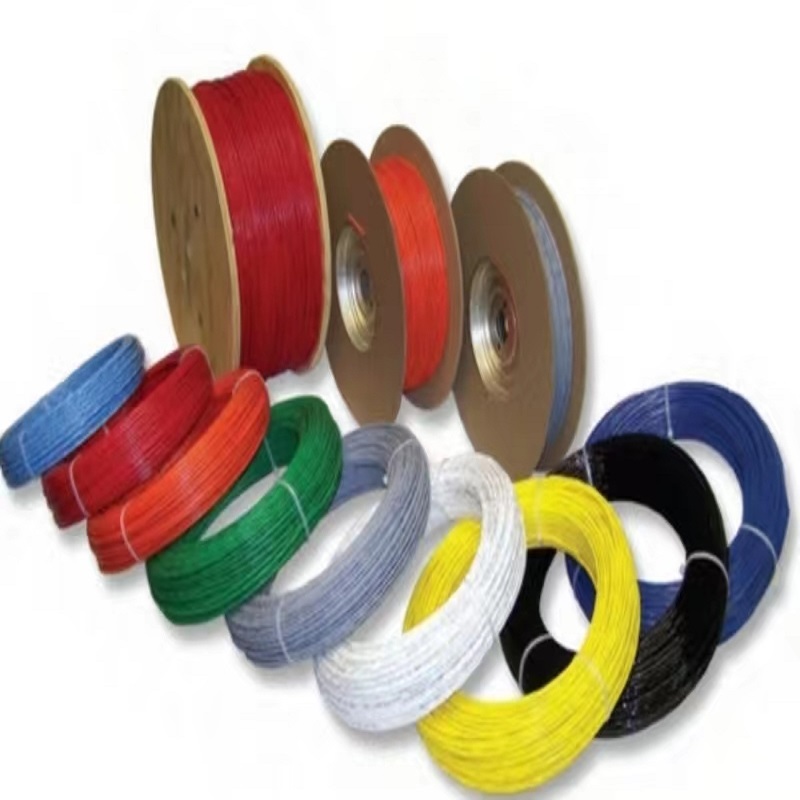Sensing Cables
Introduction
For distributed optical fiber sensing systems, the optical cable itself is the sensing element, and the “transmission” and “sense” are integrated. The sensor cable has a variety of structural forms of metal armor and polymer material sheathing. The specially designed sensor cable can not only transfer external heat/deformation quickly, but also effectively protect the optical fiber inside the cable, which is suitable for the application needs of various industries.
Non-metal temperature sensing cable
Non-metal temperature sensing cable is a kind of sensor cable specially designed for the temperature measurement environment with strong electric field and strong magnetic field. The fiber optic cable adopts all-non-metal center beam tube structure, which is composed of PBT oil-filled beam tube, aramidon yarn and outer sheath, which is simple and practical. This kind of cable has excellent optical properties, high waterproof, no metal media and other advantages, which is very suitable for high voltage cable temperature measurement applications in cable tunnels/pipe corridors.
Non-metal temperature sensing cable
Metal clad temperature sensing cable
Metal armored temperature sensing cable adopts high strength double armored design, with good tensile and compressive mechanical properties. The fiber optic cable adopts a center beam tube structure, which is composed of PBT oil-filled tube, spiral steel strip, aramid yarn, metal braided net, aramid yarn and outer sheath. This kind of cable has excellent optical properties, high water resistance, high tensile/compressive strength, good flexibility, wide temperature application range and so on. In addition, the outer sheath adopts high thermal conductivity polymer to improve the response speed of the optical fiber to the external temperature, which is suitable for temperature measurement applications such as cable tunnels and oil pipelines.
Metal clad temperature sensing cable
Tightly packed strain sensing cable
The outer sheath of tightly packed strain optical cable is made of high polymer, the sensing fiber is closely connected to the outer sheath, and the external strain can be transferred to the internal sensing fiber through the protective sleeve. It has good flexibility, convenient layout, and general tensile and compressive mechanical strength, which is suitable for indoor environment or outdoor environment monitoring with low risk of external impact. Such as cable tunnel/pipe corridor settlement monitoring.
Tightly packed strain sensing cable
Product features
· Based on the high polymer sheath package, can resist the impact of the bottom strength;
· Elastic, soft, easy to bend, not easy to break;
· It can be fixed on the surface of the measured object in a adhesive way, and it is closely attached to the measured object and has good deformation coordination;
· Anti-corrosion, insulation, low temperature resistance;
· Good wear resistance of outer sheath.
Enhanced strain sensing cable
The reinforced strain fiber cable is protected by a layer of multiple reinforcement elements (copper stranded wire or polymer reinforced FRP), and the outer sheath packaging material is high polymer. The addition of strengthening elements effectively improves the tensile and compressive strength of strain optical cable, which is suitable for direct buried or surface attached optical cable laying methods, and can resist the impact including the concrete pouring process, and is widely used in bridge, tunnel settlement, slope landslide and other harsh monitoring occasions.
Enhanced strain sensing cable
Product features
· Based on the twisted cable-like structure, multiple strands of high-strength strengthening elements effectively improve the tensile and compressive strength of the cable;
· External deformation is easy to transfer to the optical fiber;
· Elastic, easy to bend, not easy to break;
· It can be fixed in the concrete by direct burial to monitor the internal strain change of the structure;
· Anti-corrosion, waterproof, low temperature resistance;
Professional technical engineer dedicated to guide you
According to your actual needs, choose the most reasonable overall design and planning procedures
